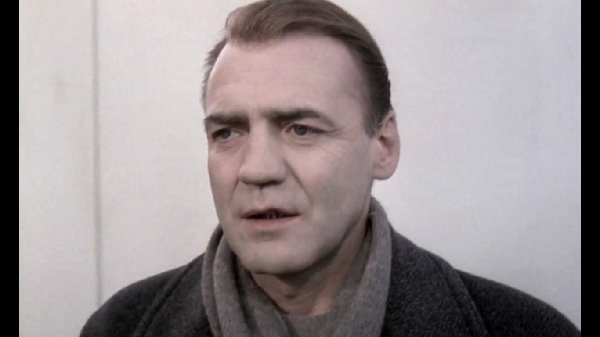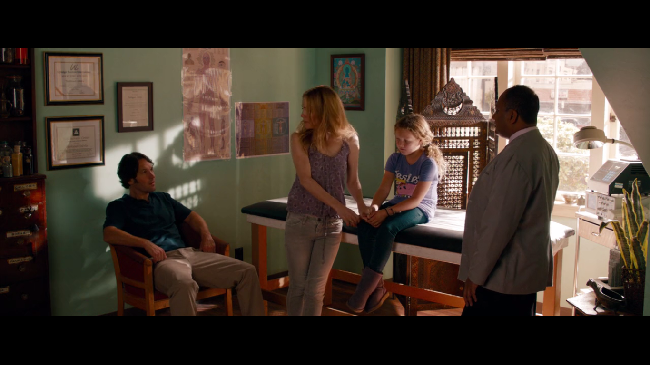How strange it is that a single human element can simultaneously be a film’s greatest strength and the source of most of its shortcomings. But such is the case with Marion Cotillard’s lead performance in the Jean-Pierre Dardenne & Luc Dardenne’s 9th feature-length film Two Days, One Night. Such a high-profile star casting decision rose more than a few eyebrows in the cinephile community, as the Dardenne Brothers had spent the quasi-totality of their filmography casting non-professional or unknown actors, of which three — Olivier Gourmet, Fabrizio Rongione and especially Jérémie Renier — subsequently rose to certain prominence. However, their previous 2011 effort The Kid With The Bike had starred Belgian actress Cécile De France, so one may see the decision to cast Cotillard as a logical step forward. Regardless, fears that such an international star would stick out like a sore thumb in the Dardennes’ restrained and neorealist-influenced portrayal of working-class Belgium have proven to be only partially justified: Against all expectations, Marion Cotillard delivers a startlingly unglamorous and unassuming performance without once giving the impression of making ostensible efforts to do so; an achievement all the more impressive considering the potential her role — a depressive mother and wife struggling to keep both her psychological composure and her job after a sick leave — had to be used as a vehicle for patent award-baiting. However, the star-struck reverence with which Dardenne Brothers film her suffering ends up handicapping the film by its consequent relegation of smaller but no-less important actors to the sidelines.
There are sadly many other scenes that do not succeed as well with that premise, and that is where the Dardennes’ usually impeccable actors’ direction becomes problematic. In scenes such as her meeting with Willy (Alain Eloy) or virtually every scene involving her husband Manu (Fabrizio Rongione), their camera is practically pasted to her and her control is rarely questioned, thus preventing a more thorough survey of any hidden feelings the scene may hold. An additional problem that tarnishes both the film and the Dardennes’ record is their uncharacteristically clumsy dialogue. Having apparently forgotten their knack for making the most banal and pedestrian words and phrases we use every day sound fresh and unpolished, the Brothers have peppered their script with heavy-handed emotional exposition that, far from the uncompromising simplicity of their greatest films such as L’Enfant or Rosetta, seems intent on taking the audience by the hand and telling them what to feel. This is evident from the very first scene, which sees Sandra waking up to a phone call, listening to the unheard bad news then walking to her bathroom to pop a pill and repeat to herself “I mustn’t cry…I mustn’t cry…”. The viewer does not yet know what has made her so upset, but the blatancy with which the scene attempts to grab their attention as well as its instruction on what to feel through dialogue that could come across as a form of reverse psychology, makes it a particularly clunky introduction. Part of this can be once again ascribed to the rapture that appears to have taken possession of the Dardenne Brothers as they follow Cotillard around the room struggling to maintain composure, as if to say “Look how amazing our actress is!” Which, it bears repeating, she is indeed. But as a general rule, a filmmaker should always keep the focus on the character rather than how good the character’s performer is.
If it has not supplanted The Son as the weakest film in the Dardenne Brothers’ filmography yet, Two Days, One Night is an arguably greater and more frustrating disappointment considering the amount of talent on display. After having achieved a certain kind of naturalist poetry with The Kid With The Bike, the Dardennes appear to have fallen back on a certain kind of formula based on a mishmash of their previous successes: Handheld cameras, a working-class setting, a sympathetic migrant worker or two, a couple of actors from the old guard (Rongione, and Olivier Gourmet, who has appeared in every Dardenne film since 1996’s The Promise) and an acclaimed female star in the leading role of a woman fighting for her fate. There is of course nothing inherently wrong with using familiar tropes, but comparison to previous films cannot help but induce the unpleasant sensation that the Dardenne Brothers might have run out of breath. Let us hope they will catch up soon.

























.jpg)




















